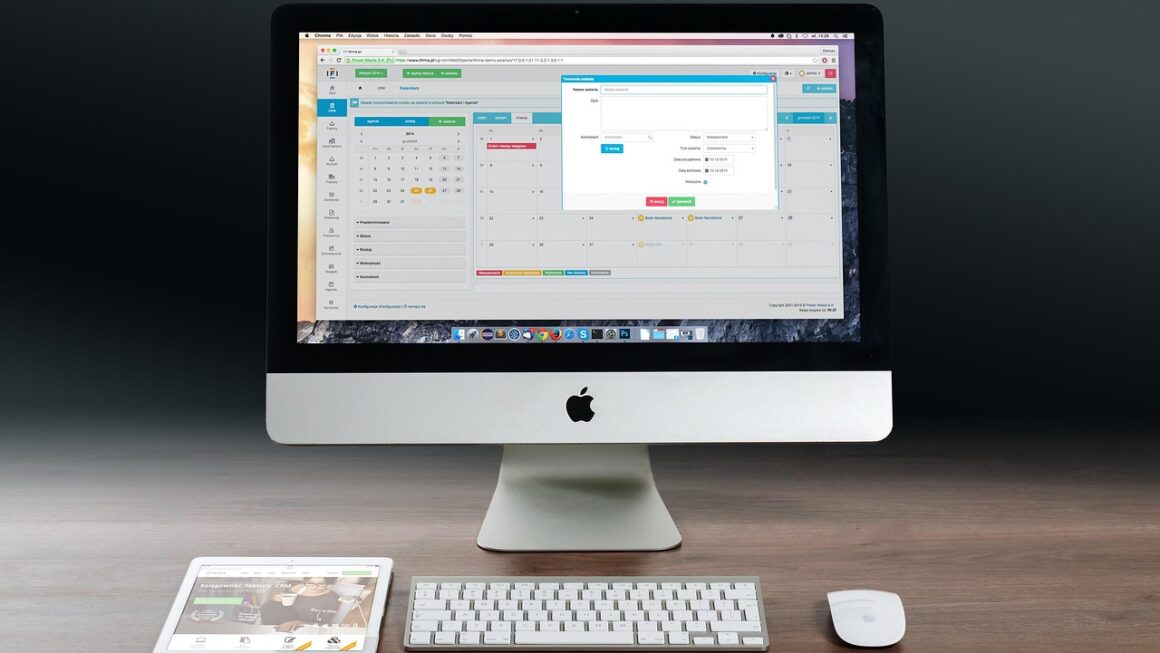In today’s fast-paced world, effectively managing your time is no longer a luxury, but a necessity. Whether you’re a student juggling classes and extracurriculars, a professional navigating demanding deadlines, or a stay-at-home parent managing a household, feeling overwhelmed by a lack of time is a common experience. Fortunately, a plethora of time management tools are available to help you take control of your schedule, boost your productivity, and achieve your goals. This blog post delves into the world of time management tools, exploring different categories and highlighting the best options to suit your individual needs.
Understanding Time Management Techniques and Tools
The Importance of Effective Time Management
Time management is more than just creating a to-do list; it’s about prioritizing tasks, allocating your time wisely, and minimizing distractions. Why is this so important?
- Increased Productivity: By structuring your day and focusing on the most important tasks, you can accomplish more in less time.
- Reduced Stress: Feeling in control of your schedule reduces anxiety and promotes a sense of calm.
- Improved Focus: Time management techniques help you minimize distractions and maintain concentration on the task at hand.
- Better Work-Life Balance: By efficiently managing your time, you can dedicate more time to personal pursuits and relationships.
- Achievement of Goals: When you have a clear plan and track your progress, you’re more likely to achieve your short-term and long-term goals.
Common Time Management Techniques
Before diving into specific tools, let’s touch upon some popular time management techniques:
- Pomodoro Technique: Working in focused 25-minute intervals followed by short breaks.
- Time Blocking: Allocating specific blocks of time to specific tasks in your calendar.
- Eisenhower Matrix (Urgent/Important): Prioritizing tasks based on their urgency and importance.
- Getting Things Done (GTD): A workflow management system that emphasizes capturing, organizing, planning, and doing.
- Eat the Frog: Tackling the most challenging or unpleasant task first thing in the morning.
Understanding these techniques can help you choose the right tools and strategies for your personal workflow.
Calendar and Scheduling Apps
Overview
Calendar apps are the cornerstone of time management. They help you visualize your schedule, set reminders, and coordinate appointments.
Popular Options
- Google Calendar: A free and versatile option integrated with other Google services, offering features like shared calendars, event reminders, and goal tracking. Example: Using Google Calendar to block out time for deep work each day, preventing scheduling conflicts.
- Microsoft Outlook Calendar: Part of the Microsoft Office suite, providing robust scheduling features, email integration, and meeting coordination. Example: Sharing your Outlook Calendar availability with colleagues to easily schedule meetings.
- Apple Calendar: A simple and intuitive calendar app for iOS and macOS users, offering iCloud integration and cross-device syncing. Example: Setting up travel time reminders in Apple Calendar to ensure you arrive at appointments on time.
- Fantastical: A premium calendar app known for its natural language input, beautiful design, and advanced features. Example: Using Fantastical’s natural language input to quickly add events like “Meeting with John next Tuesday at 2 pm.”
Utilizing Calendar Apps Effectively
- Color-code events: Use different colors to visually distinguish between different types of appointments (e.g., work meetings, personal events, errands).
- Set reminders: Utilize multiple reminders to avoid missing important deadlines or appointments.
- Schedule buffer time: Include buffer time between appointments to account for travel, unexpected delays, or to simply recharge.
- Share your calendar (selectively): Share your calendar with colleagues, family members, or assistants to improve coordination and collaboration.
Task Management Apps
Overview
Task management apps go beyond simple to-do lists, offering features like project management, collaboration tools, and progress tracking.
Leading Task Management Platforms
- Todoist: A popular task manager known for its clean interface, powerful features, and cross-platform availability. Example: Creating a project in Todoist to track all the tasks required for a specific project at work, assigning due dates and priorities.
- Asana: A robust project management tool designed for teams, offering features like task assignments, project timelines, and progress reports. Example: Using Asana to manage a marketing campaign, assigning tasks to team members and tracking their progress through different stages.
- Trello: A visual task management tool that uses Kanban boards to organize tasks and projects. Example: Creating a Trello board for a personal project, with columns for “To Do,” “In Progress,” and “Done” to visually track progress.
- Microsoft To Do: A simple and free task management app integrated with Microsoft Outlook, allowing you to manage tasks and reminders in one place. Example: Using Microsoft To Do to create a grocery list that syncs across your phone and computer.
Tips for Maximizing Task Management Apps
- Break down large tasks: Divide large, overwhelming tasks into smaller, more manageable subtasks.
- Prioritize tasks: Use priority levels (e.g., high, medium, low) to focus on the most important tasks first.
- Set due dates: Assign due dates to all tasks to stay on track and avoid procrastination.
- Use tags and labels: Use tags or labels to categorize tasks by project, context, or energy level.
- Regularly review your tasks: Take time each day or week to review your tasks, update progress, and adjust priorities.
Focus and Productivity Tools
The Challenge of Distractions
In today’s digital age, distractions are ubiquitous. Social media notifications, emails, and constant pings can significantly derail your focus and productivity.
Tools to Enhance Focus
- Freedom: Blocks distracting websites and apps across all your devices, allowing you to focus on your work. Example: Using Freedom to block social media websites and email during a focused work session.
- Forest: A gamified app that helps you stay focused by planting a virtual tree that grows while you work and dies if you leave the app. Example: Using Forest to stay focused on writing a report for 2 hours, earning a virtual tree for your virtual forest.
- Focus@Will: A music streaming service designed to enhance focus and productivity, offering scientifically engineered music playlists. Example: Listening to Focus@Will while studying for an exam to improve concentration and reduce distractions.
- Cold Turkey Blocker: Blocks distracting websites and applications for a set period, preventing you from accessing them even if you try to. Example: Using Cold Turkey Blocker to prevent access to news websites during work hours.
Strategies for Minimizing Distractions
- Turn off notifications: Disable notifications for social media, email, and other non-essential apps.
- Create a dedicated workspace: Designate a specific area in your home or office as your workspace, free from distractions.
- Use noise-canceling headphones: Block out distracting sounds with noise-canceling headphones or earplugs.
- Communicate your need for focus: Let your colleagues or family members know when you need uninterrupted time to focus.
Note-Taking and Knowledge Management Apps
The Role of Note-Taking in Time Management
Effective note-taking can help you capture ideas, organize information, and improve your memory, ultimately saving you time in the long run.
Recommended Apps for Note-Taking and Knowledge Management
- Evernote: A versatile note-taking app that allows you to create notes, organize them into notebooks, and sync them across devices. Example: Using Evernote to take notes during meetings, organizing them into notebooks by project.
- Notion: A powerful all-in-one workspace that combines note-taking, project management, and database capabilities. Example: Using Notion to create a personal knowledge base, organizing information about different topics and projects in a structured way.
- OneNote: Microsoft’s note-taking app, integrated with other Microsoft Office applications, offering features like handwriting recognition and audio recording. Example: Using OneNote to take handwritten notes during a lecture on a tablet, easily searching for specific keywords later.
- Bear: A beautiful and minimalist note-taking app for Mac and iOS, offering markdown support and a focus on writing. Example: Using Bear to write blog posts, using markdown formatting to create a clean and organized structure.
Best Practices for Effective Note-Taking
- Use a consistent system: Develop a consistent system for organizing your notes, using notebooks, tags, or folders.
- Use keywords and headings: Use keywords and headings to make your notes easier to scan and search.
- Summarize key points: Summarize the key points of each note to quickly recall the information later.
- Review your notes regularly: Take time to review your notes regularly to reinforce your understanding and identify any gaps in your knowledge.
Conclusion
Effective time management is a crucial skill in today’s demanding world. By understanding various time management techniques and leveraging the power of time management tools, you can take control of your schedule, boost your productivity, and achieve your goals. Experiment with different tools and strategies to find what works best for you, and remember that consistent effort is key to developing effective time management habits. Investing time in learning how to manage your time will yield dividends in all areas of your life.




